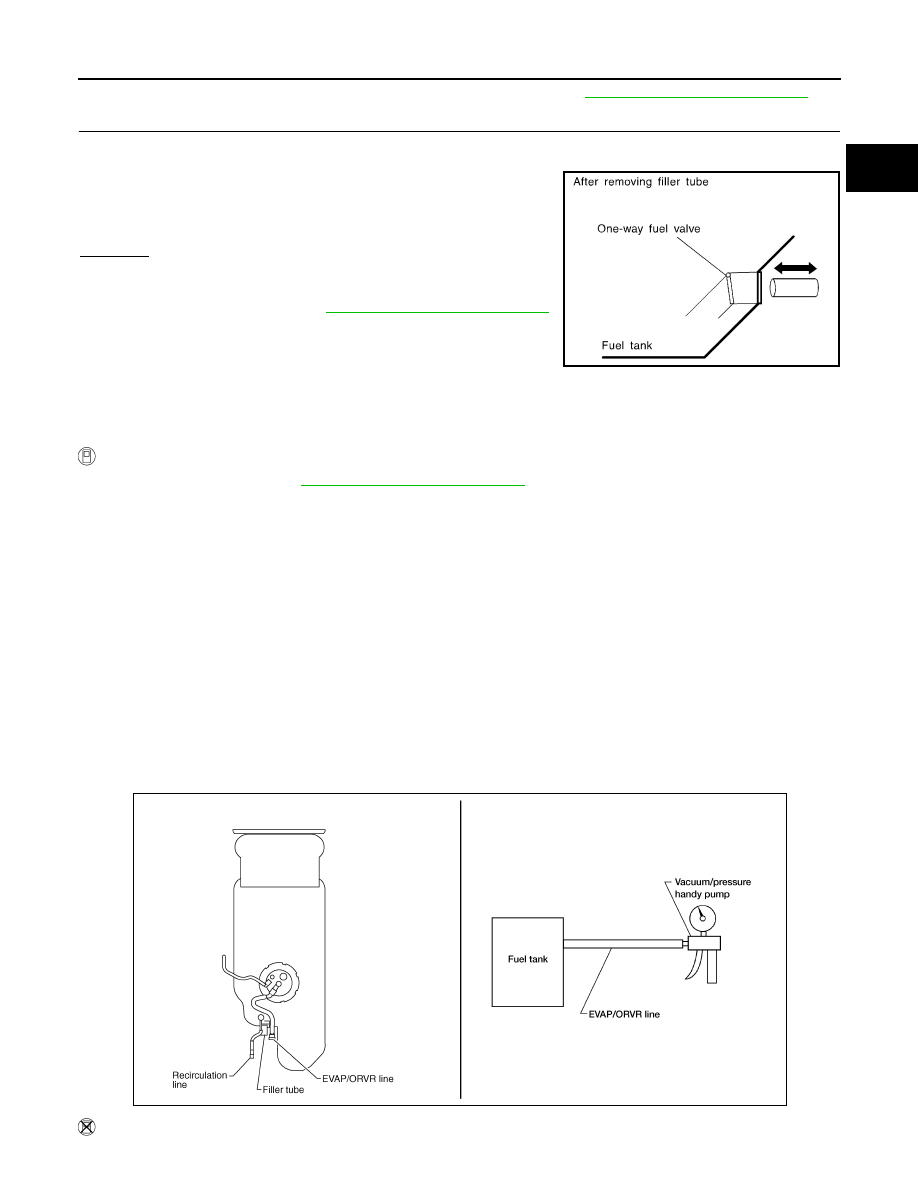Nissan Frontier. Manual - part 593

ON BOARD REFUELING VAPOR RECOVERY (ORVR)
EC-943
< DTC/CIRCUIT DIAGNOSIS >
[VQ40DE FOR USA AND CANADA]
C
D
E
F
G
H
I
J
K
L
M
A
EC
N
P
O
NG
>> Repair or replace one-way fuel valve with fuel tank. Refer to
FL-6, "Removal and Installation"
.
11.
CHECK ONE-WAY FUEL VALVE-II
1. Make sure that fuel is drained from the tank.
2. Remove fuel filler tube and hose.
3. Check one-way fuel valve for operation as follows.
When a stick is inserted, the valve should open, when removing
stick it should close.
Do not drop any material into the tank.
OK or NG
OK
>> INSPECTION END
NG
>> Replace fuel filler tube or replace one-way fuel valve
with fuel tank. Refer to
FL-6, "Removal and Installation"
.
Component Inspection
INFOID:0000000009481648
REFUELING EVAP VAPOR CUT VALVE
With CONSULT
1. Remove fuel tank. Refer to
FL-6, "Removal and Installation"
2. Drain fuel from the tank as follows:
a. Remove fuel feed hose located on the fuel gauge retainer.
b. Connect a spare fuel hose, one side to fuel gauge retainer where the hose was removed and the other
side to a fuel container.
c. Drain fuel using “FUEL PUMP RELAY” in “ACTIVE TEST” mode with CONSULT.
3. Check refueling EVAP vapor cut valve for being stuck to close as follows.
Blow air into the refueling EVAP vapor cut valve (from the end of EVAP/ORVR line hose), and check that
the air flows freely into the tank.
4. Check refueling EVAP vapor cut valve for being stuck to open as follows.
a. Connect vacuum pump to hose end.
b. Remove fuel gauge retainer with fuel gauge unit.
Always replace O-ring with new one.
c. Turn fuel tank upside down.
d. Apply vacuum pressure to hose end [
−13.3 kPa (−100 mmHg, −3.94 inHg)] with fuel gauge retainer
remaining open and check that the pressure is applicable.
Without CONSULT
SEF665U
BBIA0568E